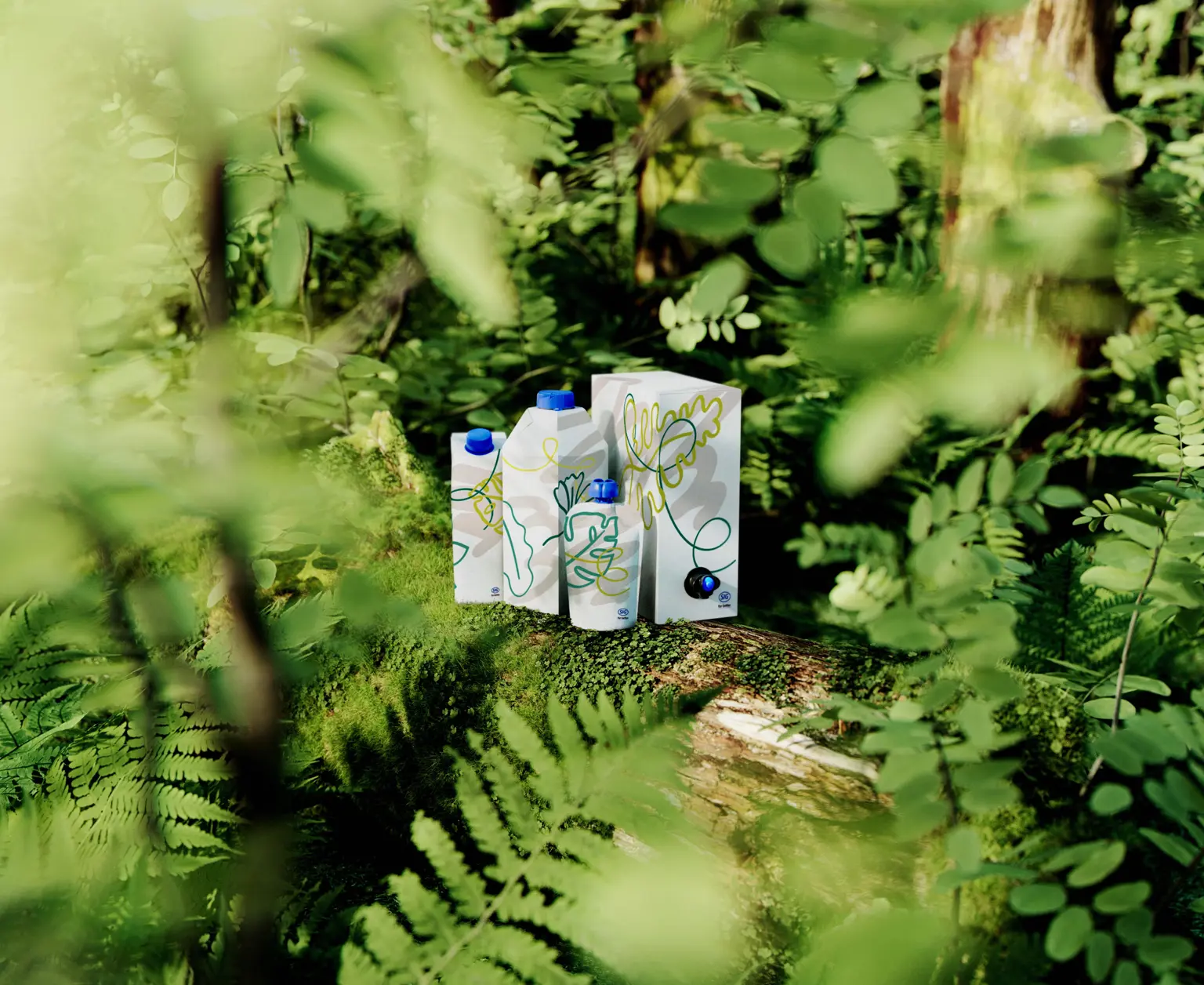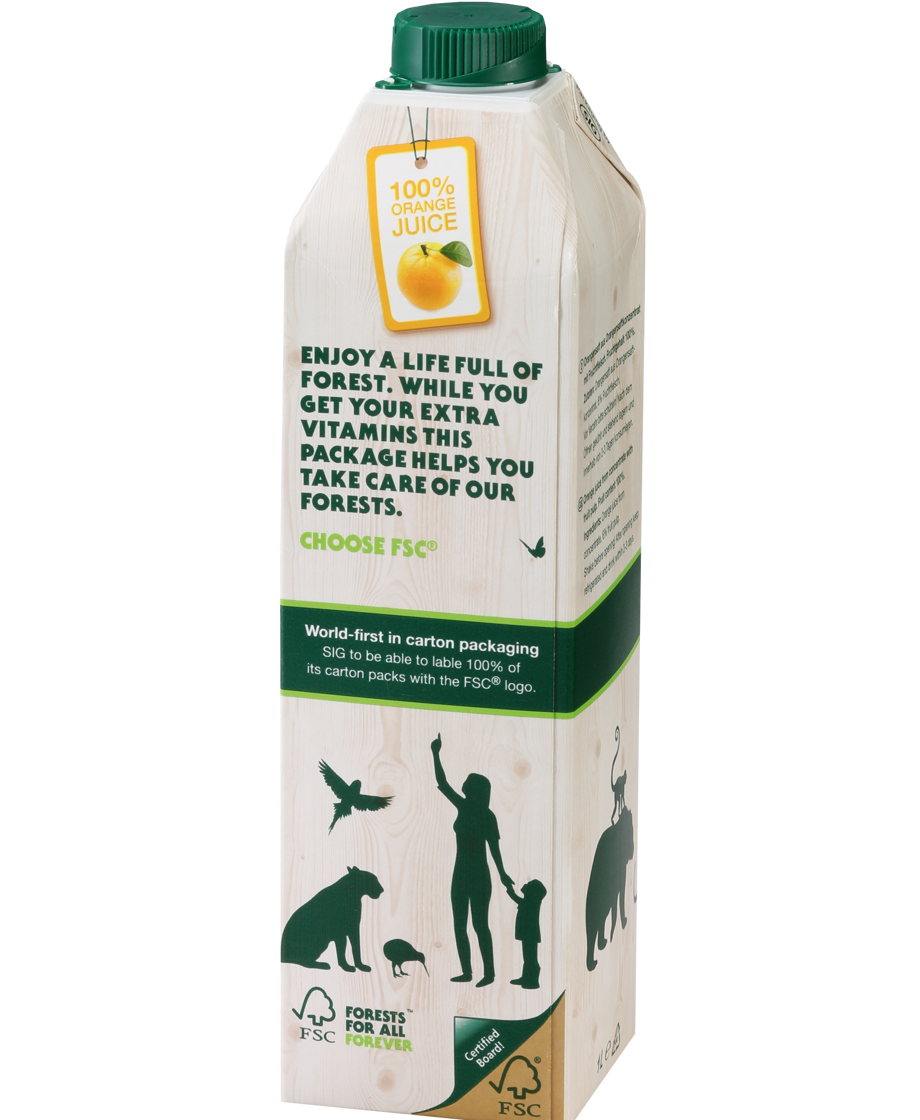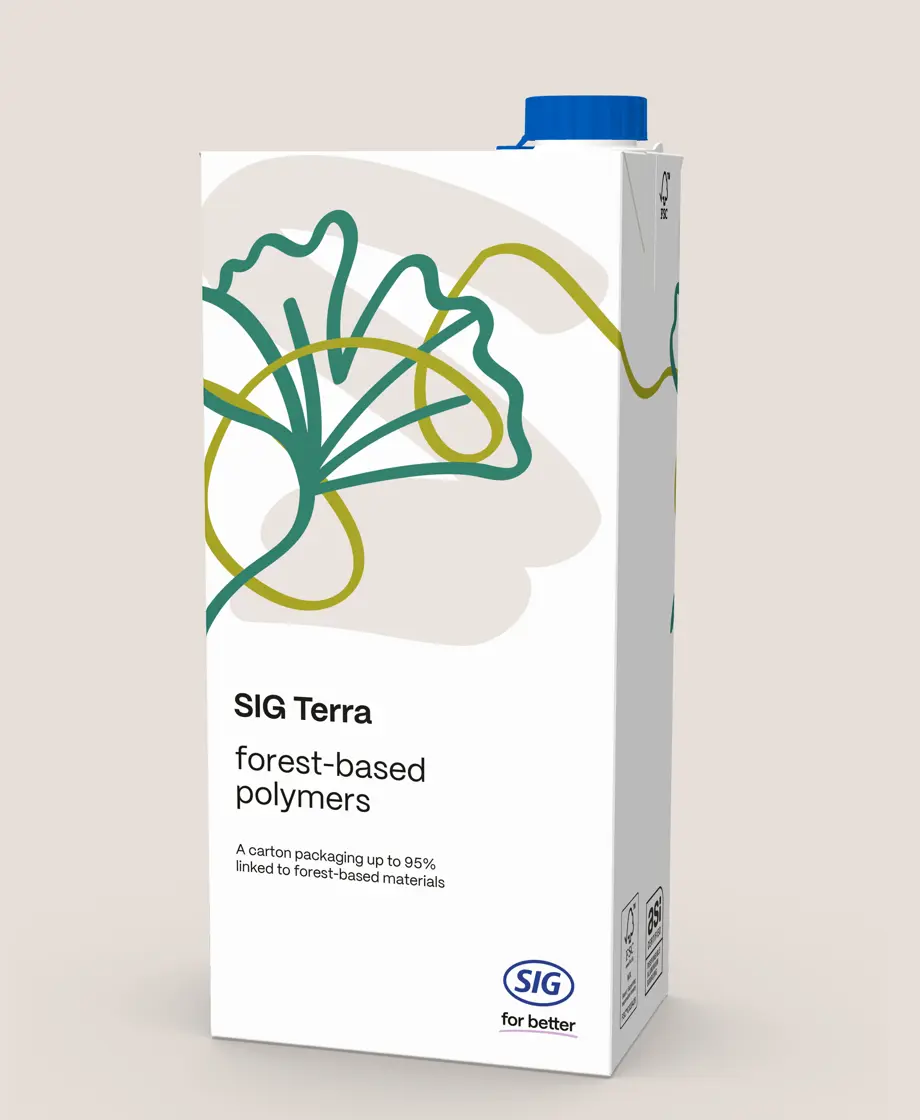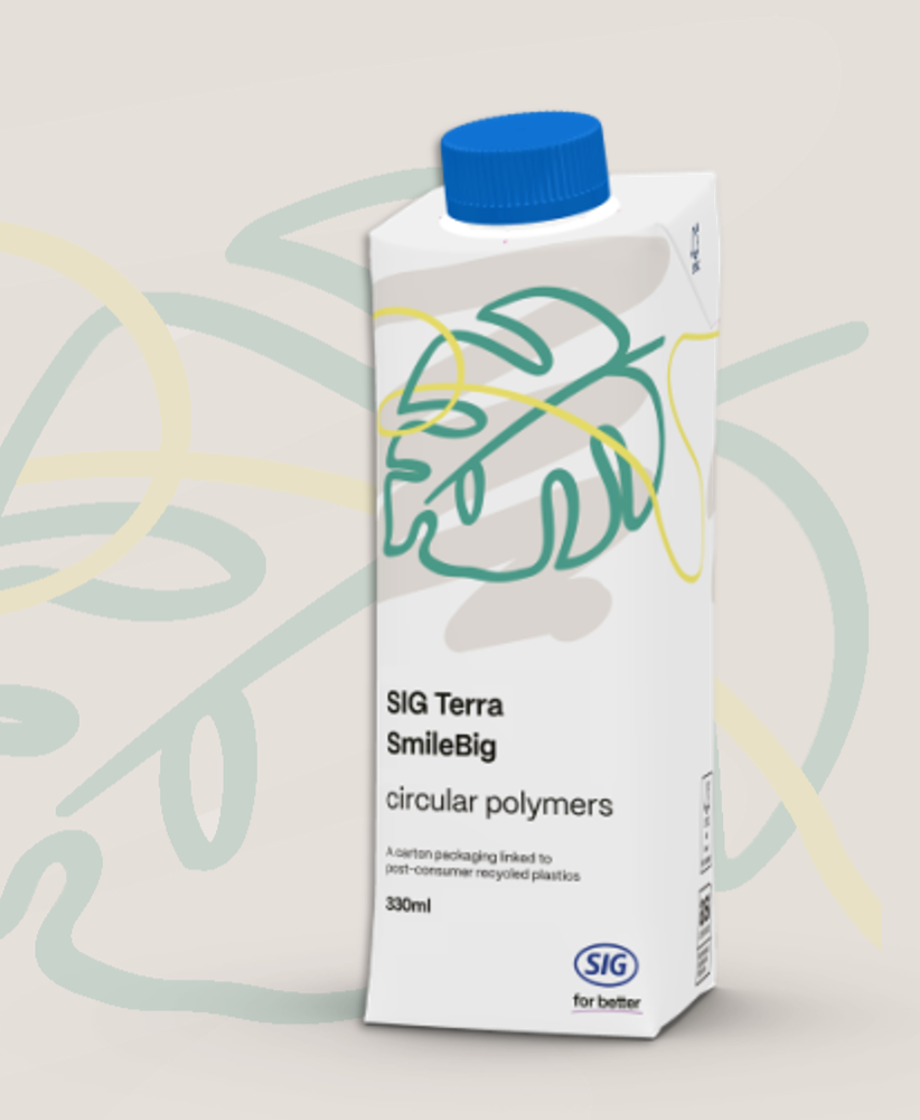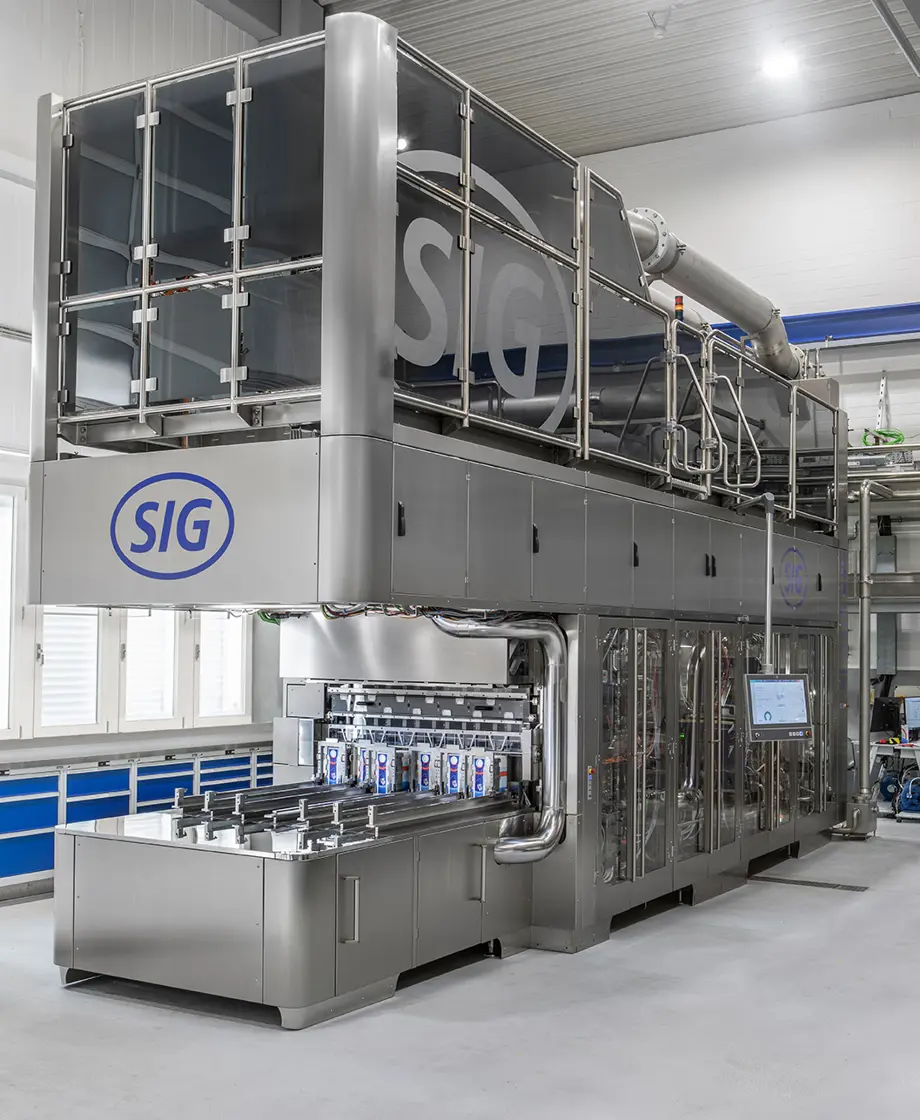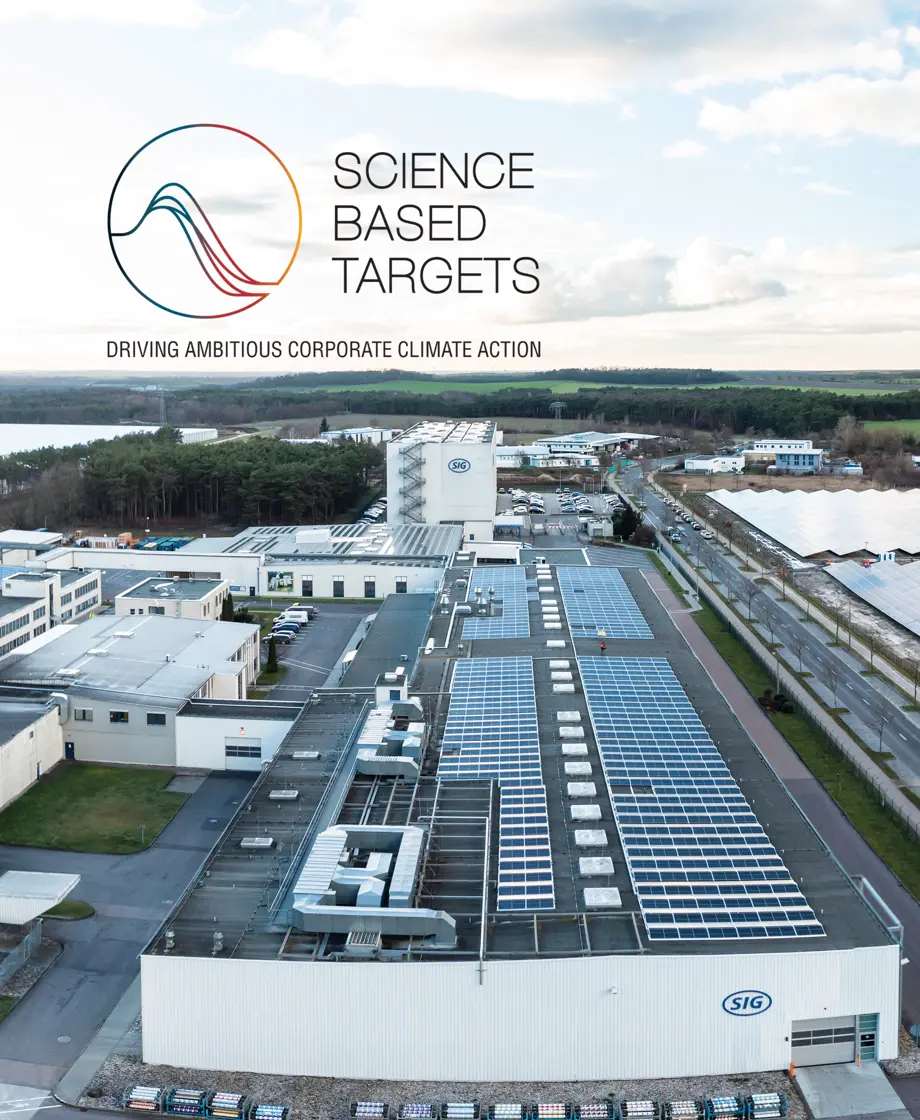Taking a life-cycle approach
We consider the environmental impacts of our packaging innovations through robust lifecycle assessments carried out by independent experts using the ISO 14040 and 14044 international standards and critically reviewed by an independent panel.
These LCAs show that our standard aseptic cartons offer significant reductions in life-cycle environmental impacts compared with other types of packaging, such as glass, plastic bottles or cans. Our most sustainable product innovations – our SIG Terra solutions – lower their life-cycle impacts even further.

Optimizing use of materials
Our standard procedures mandate that new packaging designs must demonstrate optimised resource use compared with previous models, while continuing to deliver the quality and functionality that customers and consumers demand.
The innovative RS structure for our aseptic cartons and the exceptionally high product-to-package ratio of bag-in-box and spouted pouches already optimize material use in our existing solutions.

Going 100% renewable
We have led the industry with the first solutions for aseptic cartons with no aluminum layer – first for dairy and now also for oxygen-sensitive products, such as juices. This increases their renewable paperboard content to around 82%. And SIG Terra Alu-free + Forest-based polymers is the first aseptic carton linked to 100% renewable materials.
The polymers used in our SIG Terra Alu-free + Forest-based polymers and SIG Terra Forest-based polymers are linked to forest-based renewable materials via an innovative mass-balance system. This system supports a transition from fossil to renewable raw materials within the conventional and highly efficient polymer industry. It is endorsed by The Ellen MacArthur Foundation as a valid way to support the circular economy.
We were also the first to offer a paper straw for aseptic cartons.

Towards circularity
All our cartons are designed to be fully recyclable. And we aim to further reduce the amount of non-fiber materials in our carton packs to increase the share of renewable materials and enable SIG cartons to go into paper recycling streams where relevant by 2030.
We’re innovating to make more of the bags in our bag-in-box solutions fully recyclable via mainstream recycling channels through the development of simplified structures. Bag-in-box are tethered by design and we’re introducing tethered closures across the rest of our portfolio to help ensure caps get recycled together with packs.
We’re also looking for ways to use recycled materials. We offer the first aseptic carton and the first bag-in-box bag linked to post-consumer recycled content. The polymers in both are linked to 100% recycled plastics via a mass balance system.

Our starting point
Standard SIG aseptic carton and third-generation filling machine.
- Packs made of, on average, 75% FSC™-certified renewable paperboard (trademark licence code: FSC™ C020428), 21% polymers and an ultra-thin layer of aluminum foil.
- 28-70% lower carbon footprint than alternative packaging, such as plastic and glass bottles and aluminium cans1.
- Industry-leading waste rate (<0.5%) through highly efficient filling process.
1 Results based on ISO-compliant life-cycle assessment CB-100732c for Europe.
2 Linked to wood residues from paper making via an independently certified mass balance system.
3 FSC™ trademark license code: FSC™ C020428.
4 Via an independently certified mass balance system.
5 Association of Plastic Recyclers.

